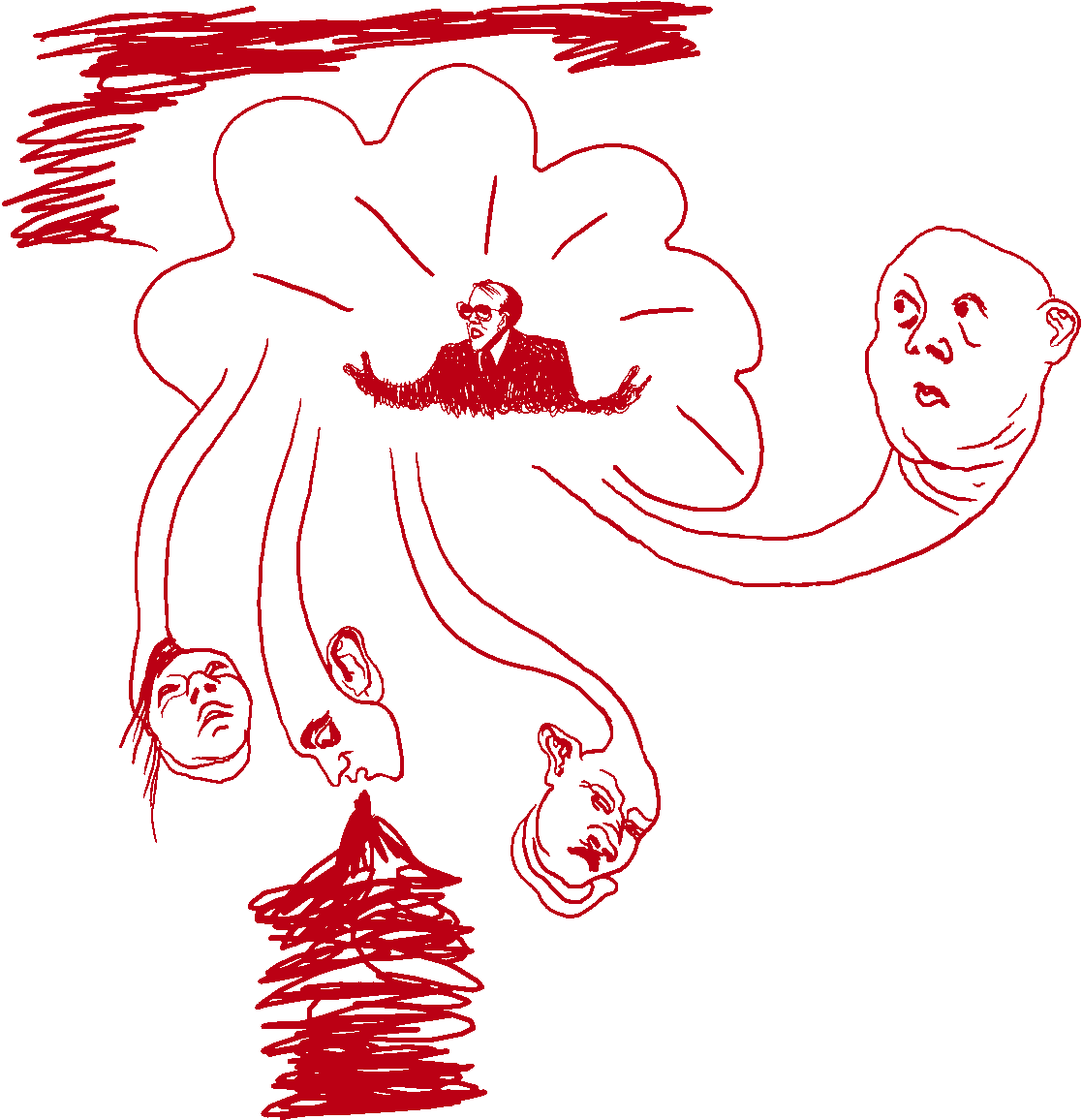podcast
CNN 5 Good Things
How about a break — for your ears? At CNN, we know the news can be a lot to take in. So each week, 5 Good Things offers you a respite from the heavy headlines and intense news cycle. Treat yourself to something fun and uplifting every Saturday as we share the bright side of life from all over the globe.

The Guy Who Created His Dream Job
CNN 5 Good Things
Mar 1, 2025
Doctors had to get crafty to save a three-month-old's life. A retired ocean liner is embarking on its final journey with a new mission for the record books. A dog lover left the corporate world and found his calling behind a camera. A new study pinpoints where massive sources of clean energy could exist. Plus, why a family cat is living her best ninth life.
Episode Transcript
Krista Bo
00:00:00
Hey there. Did you know today, March 1st, is National Share a Smile Day? So consider it your reminder to pass on some good vibes. I'll go first.
Captain Joseph Farrell
00:00:10
You only get one chance at doing this.
Krista Bo
00:00:12
An iconic ship is on its way to becoming the world's largest home of its kind for fish, turtles, sharks and more. Plus,
Dr. Erin Dixon
00:00:19
Medically, I don't have an answer as far as how this cat survived that ordeal. She is a miracle cat.
Krista Bo
00:00:24
Why this beloved family cat is living her best ninth life. From CNN I'm Krista Bo, and this is Five Good Things.
Sarah Oliveri
00:00:37
I cannot thank that team enough for what they did. Not only for him, but for for me and my family.
Krista Bo
00:00:44
The world's smallest pacemaker, no larger than the size of a large vitamin, saved a newborn baby's life. Sarah and Michael Oliveri, from Long Island, New York, learned at her 20 week ultrasound that their third son, Mikey, had a rare and dangerous heart condition called congenital complete heart block.
Dr. Reina Tan
00:01:05
And what we mean by heart block is when you think about the electrical system of the heart, everything comes from the top portion of the heart, and then it has to get to the melt the heart down to the bottom. And so that electrical connection was disrupted.
Krista Bo
00:01:18
Dr. Reina Tan says that disruption caused his heartbeat to slow to dangerous levels in the womb. She was part of the team of doctors at Hassenfeld Children's Hospital at NYU Langone Health that treated Mikey.
Dr. Reina Tan
00:01:31
This is a pretty rare condition. It's one in 15 to 20,000 live births, and not even everyone that has this condition will need a pacemaker right away.
Krista Bo
00:01:41
But it became clear shortly after Mikey was born, over a month early, on December 5th. He needed one as soon as possible. His heart rate was below 50 beats per minute, far from a baby's normal 130 to 150. And at five pounds and five ounces he was too small for a standard pacemaker. So doctors had to get creative. They sought emergency FDA approval to transform a kind of pacemaker meant for adults. The transformed device is as light as a penny and will temporarily fit in his small body and get him home sooner.
Sarah Oliveri
00:02:15
We were like, wow, that's that's quite something to think that technology has come this far, that we can put something that small, you know, and that effective into an infant's body.
Krista Bo
00:02:26
'The surgery took place on December 17th. And after a few weeks in the hospital, Sarah and Mikey were sent home on January 2nd - two days before his original due date. And he finally got to meet his older brothers, five-year-old Anthony and three-year-old Johnny, for the first time.
Dr. Reina Tan
00:02:42
There's been 52 implants throughout the US, so he's one of those few babies that's gotten this device, and then he gets maybe three, four years out of this device, and by that time he'll be much bigger and we could implant that traditional device.
Krista Bo
00:02:57
Mikey celebrates his three month birthday next Wednesday, and Mom and dad say he's doing great.
Sarah Oliveri
00:03:03
Pretty much coming home and being able to live a normal life was a blessing. He's close to eight pounds now, so he's he's eating well. He's he's growing. Just started, you know, smiling without it being like a reflex. So he's doing really well.
1952 News Reel
00:03:21
America makes her a bid for the Atlantic blue ribbon as the biggest and fastest liner built in the United States.
Krista Bo
00:03:27
In its heyday, the SS United States broke the transatlantic speed record back in 1952, crossing the Atlantic Ocean from New York City to Cornwall, England in three days, ten hours and 40 minutes. The iconic ship is bigger than the Titanic and almost as long as the Chrysler Building, and was equipped to transport a full division of 14,000 troops 10,000 miles without refueling. The Mona Lisa has even been a passenger.
Krista Bo
00:03:54
Now the ocean liner is embarking on its final voyage to set a new record by becoming the world's largest artificial reef off the coast of the Florida Panhandle.
Captain Joseph Farrell
00:04:05
I've been in Marin my entire life, and I really get mixed emotions about seeing a vessel being scrapped, but reefing is just such a wonderful way to do this.
Krista Bo
00:04:15
World Satellite Television News spoke to Captain Joseph Farrell. He's a ship sinking and artificial reef expert involved with this mission. Philadelphia had been home to the SS United States for nearly three decades until last Wednesday, when it was towed through the Delaware River on its way to Mobile, Alabama. Captain Farrell says that's where the ship will be prepared to properly sink into its watery grave, to become a home for fish in the Gulf of Mexico.
Captain Joseph Farrell
00:04:39
So this thing has to be done right in it, and the vessel deserves it. You only get one chance at doing this.
Krista Bo
00:04:44
Florida's Okaloosa County is the storied ship's new owner and officials there are thrilled to welcome the vessel as a historic addition to their collection of hundreds of artificial reefs.
Krista Bo
00:04:55
Coral reefs support vibrant marine ecosystems and act as natural barriers against storms. But natural reefs have been suffering from the effects of climate change. So artificial ones like the SS United States in the Gulf, and retired New York City and Atlanta, subway cars submerged off the East Coast, can throw underwater ecosystems a lifeline.
Krista Bo
00:05:19
If you love your job, you never have to work a day in your life. John Fabiano from Buffalo, New York, took that wisdom to heart and left the corporate world back in 2022 to pursue his passion. And so far, he's having a blast.
John Fabiano
00:05:33
I'm in my mid 30s, I'm traveling around photographing dogs, and I couldn't be happier having more fun.
Krista Bo
00:05:39
He's a lifelong dog lover and says he's always been fascinated by the relationship between dogs and humans.
John Fabiano
00:05:46
The way I treat my dog is much different than the way other people treat dogs around the world, so I wanted to get a glimpse of that. And also, I look at dogs all the time as role models. Just their zest for life; I think they're models of forgiveness, so I wanted to get a glimpse of that.
Krista Bo
00:06:01
So he saved up to buy a camera, took some classes, and in March of 2023, he took the leap. He got on the plane and started a project called, Wags Around the World, where he photographs dogs in different countries.
John Fabiano
00:06:13
I went to Germany for German Shepherds, Japan for Shibas, went to Greenland to see sled dogs, and I went to Australia to see cattle dogs and sheep dogs.
Krista Bo
00:06:23
'He also photographed wild dogs in South Africa, street dogs in India and shelter dogs in the US, hoping that it might help them get adopted. He got so good at it. He won a 2024 Dog Photography Award in the documentary category - for his photo of sled dogs in Greenland. If you want to check it out, the link is in our show notes.
Krista Bo
00:06:41
So what's next? John says he'd like to go to Scotland to take pictures of collies. And he's planning to relocate to Europe with his girlfriend and eventually write a book about his adventures. He says he'll probably have to rejoin the corporate workforce to make ends meet eventually, but this time he won't put the camera down.
John Fabiano
00:06:58
It's something that I'm going to do for the rest of my life. I'm so fascinated by it. It brings me so much joy and happiness, and it's something that I'll, I'll never stop doing.
Krista Bo
00:07:09
Imagine a fuel source that could power cars and homes but doesn't pollute the air. I'm talking about white hydrogen. This clean burning gas could be a game changer in the fight against climate change.
Frank Zwaan
00:07:22
The white hydrogen is hydrogen that's being generated by the Earth instead of other types of hydrogen, which we produce in factories, let's say. And the great thing about white hydrogen is that there would be no pollution at all if you use this. You burn hydrogen, you get energy and water.
Krista Bo
00:07:39
Frank Zwaan is a geologist at the University of Lausanne in Switzerland. He's the lead author of a new study published last week in Science Advances, that maps out where we might find natural hydrogen hotspots. Scientists have known this powerful clean fuel existed within the Earth's crust for decades.
Frank Zwaan
00:07:57
What is new is the realization that it might be around in larger quantities that we can use for energy in mountain ranges. So think about the Pyrenees and the Alps and the Balkans.
Krista Bo
00:08:07
'So why mountain ranges? All right, bear with me here. We're going to go back to geology class for a sec. White hydrogen forms in a few ways, but Frank focused on serpentinization, a natural process where water meets iron-rich rocks from deep inside the earth, triggering a reaction that produces hydrogen gas. Tectonic shifts push the rocks closer to the surface where water can reach them and create hydrogen.
Frank Zwaan
00:08:32
So I use my computer models to understand what kind of tectonic situations we can have these mantle rocks close to the surface. And it turns out that this can be very nicely done in mountain ranges, where then the conditions are quite ideal for large scale serpentinization and therefore large scale generation of white hydrogen.
Krista Bo
00:08:50
Using white hydrogen as a power source isn't just a theory either. A small village in Mali has been using it to fuel their towns since 2012. So now that Frank and his team have identified where to start looking, he says, we could be decades away from extracting it and commercializing it.
Frank Zwaan
00:09:06
At the same time, we know how things worked in the past. We have a lot more technology, so it might be faster. And especially since we have the climate crisis to consider, we might really want to do this as fast as possible so that we can have a pathway to a clean, green future.
Krista Bo
00:09:25
You've got to be kitten me. A family is breathing a sigh of relief after finding their cats that went missing for several weeks in an unlikely place. That's next.
Krista Bo
00:09:40
Sunny Loo is a beloved orange and white cat and a member of the Hanson family. CNN affiliate KKTV reports the family was preparing to move over 1000 miles away from Walla Walla, Washington, to Colorado Springs, Colorado, late last year. And that's when Sunny Loo went missing.
Krista Bo
00:10:00
After days of searching, the Hansons eventually had to leave the city without their kitty. Family and friends kept up the search in Walla Walla for about a month. But things weren't looking good.
Andy Hanson
00:10:11
I didn't know how I was going to tell my girls that, you know, we're going to stop searching.
Krista Bo
00:10:17
'Andy Hanson, his wife Kristen, and their two daughters moved into their new home in late December, and their furniture arrived about a month later when they started to set up the hide-a-bed sofa. They heard something unusual.
Kristen Hanson
00:10:28
They ran to the garage where Andy was. Come in, you gotta check the couch. I think it might be our kitty.
Andy Hanson
00:10:34
'What? This is crazy. This has been three weeks, and I rushed in there pulled out to hide-a-bed, you know and I could see that there was a small little hole into the armrest where, you know, the sound was kind of coming from.
Krista Bo
00:10:46
A vet who treated Sunny Loo said she has no idea how she survived for three weeks with no food or any water trapped in the arm of a sofa. But now her family sees her as their miracle cat.
Kristen Hanson
00:11:00
We feel like she fought to stay alive for us.
Andy Hanson
00:11:03
We're so glad to have her back in our life, and she's just living her best ninth life.
Krista Bo
00:11:16
'All right, that's all for now. Join us tomorrow for the next edition of One Thing - all about the federal response to the measles outbreak in West Texas, with Health and Human Services Secretary Robert F Kennedy Jr. at the helm.
Krista Bo
00:11:28
'Five Good Things as a production of CNN Audio. This episode was produced by Eryn Mathewson and me, Krista Bo. Our senior producers are Felicia Patinkin and Faiz Jamil. Matt Dempsey is our production manager, Dan Dzula is our technical director, and Steve Lichteig is the executive producer of CNN Audio. We get support from Joey Salvia, Haley Thomas, Alex Manasseri, Robert Mathers, Jon Dianora, Leni Steinhardt, Jamus Andrest, Nichole Pesaru, and Lisa Namerow. Special thanks to Tamara Hardingham-Gil, and Wendy Brundige. And thank you for listening. Take care. Till next time.







